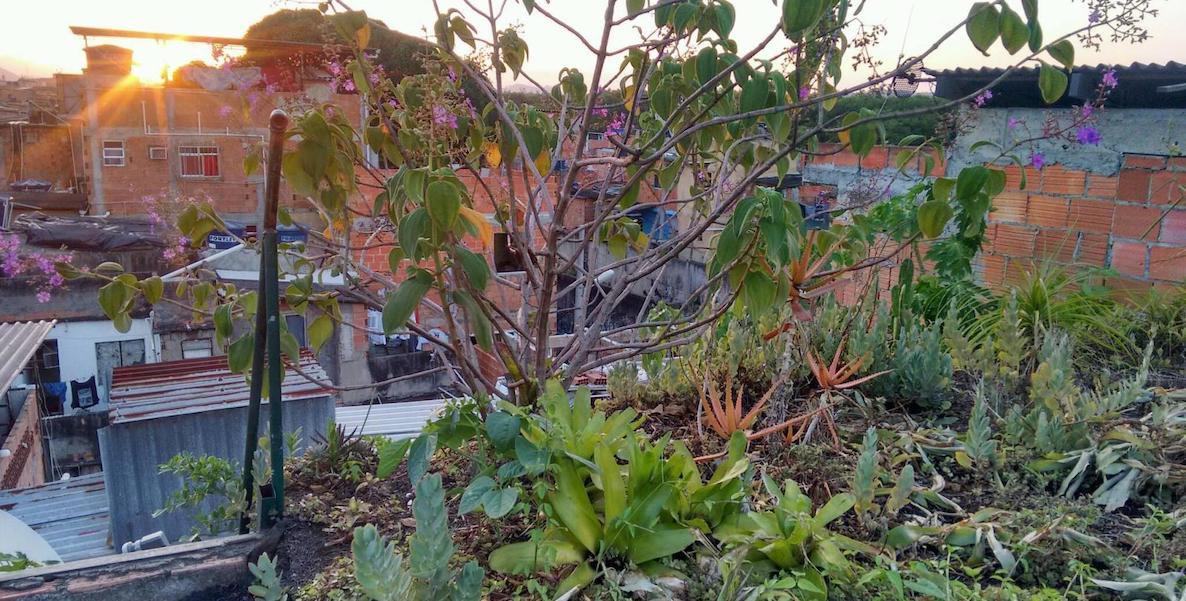In the middle of a summer of record-breaking heat, just stepping outside is enough to remind us that the world is experiencing rising temperatures due to climate change. Experts project that heat waves like the ones that so many of us have been experiencing will become more frequent, long-lasting and deadly.
As temperatures rise, so too will our need for cooling. Air conditioning is predicted to double greenhouse emissions by 2050, and the urban heat island effect — when pavement and buildings retain heat — is only making people that live in cities more vulnerable.
But cities across Latin America, Europe and Asia are creating new routes ahead. As RTBC has reported, Medellín is getting cooler thanks to “green corridors” that mimic the natural forest, Stuttgart is cooling itself with “ventilation corridors” from its chilly mountains and Tel Aviv’s solar-powered structure, LumiWave, provides shade in the day and light at night.
Here’s how four more cities around the world are beating the heat.
Rio de Janeiro
In Rio de Janeiro’s favelas, low-income communities are building their own green roofs. These affordable vinyl sheet roofs were created by Teto Verde Favela, a nonprofit founded by local Luis Cassiano. Temperatures have risen in the city by three degrees Fahrenheit over the last decade, but during a temperature comparison study, Cassiano’s roofs stayed at roughly 86 degrees, while traditional favela roofs fluctuated between 86 and 122 degrees.
Teto Verde Favela began back in 2012 with the purpose of teaching a community of 20,000 people to build their own green roofs. Although there is still more ground to cover, this initiative is proving to be effective and affordable while showcasing environmental and community-driven change.
Seville
In place of traditional air-conditioning, Seville has turned to a 3,000-year-old solution. With the help of two scientists, the city in southern Spain is reviving a Middle Eastern technology: qanats, underground channels that transport water from higher to lower altitudes and drive the coolness upwards.
A 20-meter qanat, the first to be installed, is expected to cool temperatures across a space the size of two soccer fields on the island of La Cartuja by 6 to 7 degrees Celsius.
Last year, Seville named an extreme heat wave event for the second time ever: Heatwave Yago hit the city with temperatures of 104 degrees. Qanats are expected to be ready before the end of this summer, but other components like vegetation and heat-reflecting roofs will also help keep Spain’s highest temperatures down.
Singapore
A simple approach to heat is helping Singapore address its urban heat challenges: painting buildings and other surfaces with reflective paint. According to a study published in the journal Sustainable Cities and Societies, the air in an area where buildings and pavement were painted with this “cool coating” was measured to be two degrees Celsius cooler between 11am and 3pm — Singapore’s hottest hours of the day — than the air in non-painted areas.
Currently, members of the country’s Institution of Engineers suggest a multifaceted approach to urban heat, including the incorporation of greenery and shade, since reflective paint is only one of the tools that helps to keep an entire city cool.
Munich
Can hot waste keep cities cool? It sounds counterintuitive, but German cities like Munich are turning hot waste into district heating to support their existing cooling networks in an effort to minimize greenhouse emissions.
Munich’s climate-friendly cooling system utilizes natural energy from underground water streams. According to the city utility of Munich, Stadtwerke Muenchen (SWM), the use of these natural cold water streams has resulted in energy savings in the city of 70 percent compared to traditional cooling technology like air conditioning. Thanks to the city’s cooling system, more than 80,000 residents in Munich receive ecological energy. By 2040, the city aims to establish carbon-neutral heating ahead of the federal government’s 2045 target.
Valeria Morales is Reasons to be Cheerful’s summer 2024 editorial intern. She is a journalist from Puerto Rico, currently attending the Craig Newmark Graduate School of Journalism in New York with a focus on the Latinx community.
![]() MORE IDEAS WE SHOULD STEAL TO HELP THE ENVIRONMENT
MORE IDEAS WE SHOULD STEAL TO HELP THE ENVIRONMENT
A Teto Verde Favela rooftop in Rio de Janeiro.



